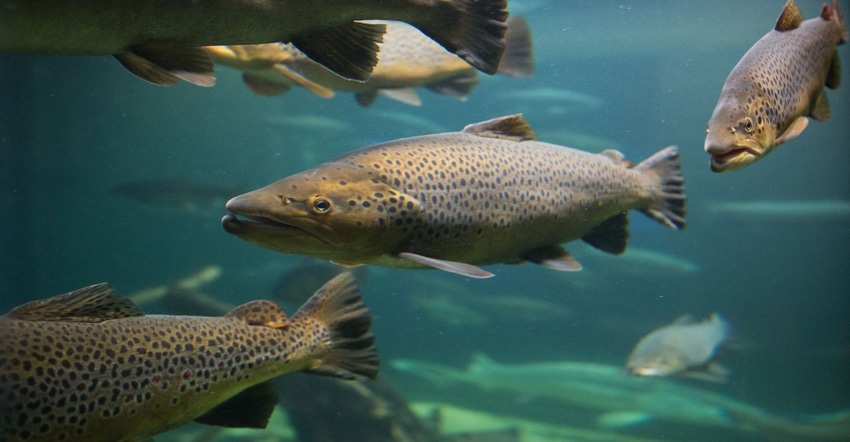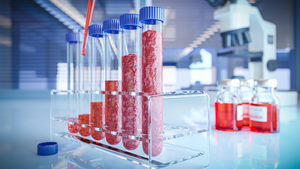FDA ordered to reassess environmental impacts of genetically engineered salmon
Groups who sued FDA over its 2015 approval of genetically engineered salmon hailed a recent court decision that the agency ran afoul of environmental laws.

A federal court in November ruled FDA failed to fully consider the effects of approving genetically engineered salmon on wild salmon in violation of the National Environmental Policy Act (NEPA).
While U.S. District Judge Vince Chhabria remanded the case to FDA for it to reconsider an environmental assessment under NEPA and a related analysis under the Endangered Species Act (ESA), he did not vacate FDA’s 2015 approval of a new animal drug application by AquaBounty to create and farm genetically engineered salmon.
Revoking FDA approval, he wrote, “would presumably require the current stock of salmon to be destroyed, a significant loss of property and animal life that would be wasteful given the real possibility that the FDA will be able to cure the NEPA and ESA errors on remand.”
The ruling is the latest decision in a lawsuit filed in 2016 against FDA by a coalition of consumer, environmental and commercial and recreational fishing organizations. The plaintiffs, which also include the Quinault Indian Nation in the Pacific Northwest, sued over FDA’s approval of a genetically engineered salmon that can grow to maturity much faster than a wild fish.
In a previous ruling in 2019 that favored Massachusetts-based AquaBounty, Chhabria affirmed FDA’s authority to regulate genetically engineered salmon under the Federal Food, Drug & Cosmetic Act (FDCA). He determined the agency’s authority extends to regulation of material used to modify an animal’s genetic makeup.
His most recent opinion concerned whether FDA ran afoul of environmental laws. FDA argued the FDCA, alone, guides its decision whether to approve a new drug application, and the agency must only consider the health and safety of the individual administering the drug, the animal receiving the medicine and humans who might consume the animal for food.
FDA contended that while it’s under a duty to follow procedural requirements under NEPA for assessing and publishing environmental risks, it must ignore the results of such an evaluation when determining whether the new animal drug is safe and should be approved.
The judge disagreed.
“So even if the FDA is correct that environmental considerations writ large were not relevant to its decision, the agency is always required to consider the subset of environmental impacts that directly involve the health of animals and humans,” he wrote. “To say otherwise would seem to create absurd possibilities.”
He raised the hypothetical of an application for a livestock drug, whose manufacturing process would contaminate the water supply near the factory, resulting in human deaths in the surrounding area.
“Surely the FDA could deny that application to avoid killing people, even if those people are not directly administering the drug or eating the livestock,” the judge opined.
Reactions to ruling
George Kimbrell, legal director of the Center for Food Safety and legal counsel in the lawsuit in the U.S. District Court for the Northern District of California, described Chhabria’s Nov. 5 ruling as “a vital victory for endangered salmon and our oceans.”
“Genetically engineered animals create novel risks and regulators must rigorously analyze them using sound science, not stick their head in the sand as officials did here,” Kimbrell said in a statement. “In reality, this engineered fish offers nothing but unstudied risks.”
AquaBounty was “disappointed with some of the conclusions” in Chhabria’s decision concerning FDA’s environmental assessment, but the company remains “confident in the robust scientific studies and review that resulted in the 2015 FDA approval,” Sylvia Wulf, president and CEO of AquaBounty, said in an emailed statement. “This case did not call into question FDA’s approval regarding the health and safety of our AquAdvantage salmon.”
Wulf said the court decision will not affect its operations on Prince Edward Island, Canada, or its raising and selling of genetically engineered salmon from its farm in Indiana. According to an FDA Q&A on its approval of AquAdvantage Salmon, the fish are raised in freshwater, land-based tanks. Several containment measures—including nets, screens and filters—are in place to prevent the salmon from escaping.
“We are committed to working with FDA on next steps and continue to evaluate the legal decision,” Wulf said. “AquaBounty is excited about the future and takes seriously the unwavering leadership that is required to offer a safe, secure and sustainable source of Atlantic Salmon that is raised right here in the U.S. heartland for U.S consumers.”
FDA also highlighted Chhabria’s decision related to environmental assessments under NEPA and the ESA.
“FDA’s approval of the application for AquAdvantage Salmon remains in place, as does the FDA’s finding that the salmon is safe to eat,” an FDA spokesperson said via email. “The FDA is continuing to evaluate the opinion.”
NEPA claims
In approving the application, FDA gave AquaBounty permission to produce eggs in Prince Edward Island and to grow the eggs into mature fish in Panama, according to Chhabria’s court decision. AquaBounty shut down the Panama facility and submitted a supplement application that has been approved by FDA to grow salmon at a facility near Albany, Indiana.
The original and supplemental approvals both contained conditions to limit the risk that the genetically engineered salmon would escape into the wild, the judge observed. The plaintiffs alleged FDA failed to sufficiently examine the risk that the fish would escape and survive in the wild, as well as the consequences for the environment if those risks were realized.
The lawsuit raised several claims under NEPA, which requires that federal agencies carrying out a major action first consider its impact on the environment. FDA prepared an “environmental assessment” that concluded FDA’s approval of AquaBounty’s application would not have a significant impact on the environment. That finding relieved FDA from having to prepare a more comprehensive document, known as an environmental impact statement.
FDA failed in its environmental assessment to sufficiently articulate its reasoning for its conclusion, according to Chhabria’s 16-page decision. On the one hand, the agency provided a detailed explanation to show the low likelihood that the fish would escape from their environment, survive in the wild and produce a stable population outside captivity, the judge acknowledged. On the other hand, FDA failed to assess the possibility of harm to natural salmon in the unlikely event the genetically engineered fish succeeded in the wild, he determined.
“FDA has not answered crucial questions about the environmental risks posed by these fish or what can happen when these fish escape,” Brettny Hardy, Earthjustice attorney and co-counsel for plaintiffs, said in a statement. “We need these answers now and the FDA must be held to a higher standard. We are talking about the mass production of a highly migratory GE fish that could threaten some of the last remaining wild salmon on the planet.”
Chhabria ordered FDA to examine the consequences if the genetically engineered salmon established “a persistent population outside of captivity.”
“The results of that revised analysis may show that an environmental impact statement is required, but they may also show that a finding of no significant impact is appropriate,” the judge wrote.
Endangered species analysis
Chhabria also held FDA could not support a determination it made concerning the impact of its approval on an endangered species—Atlantic salmon in the Gulf of Maine.
Under Section 7 of the ESA, federal agencies must assess whether a proposed action “may affect listed species or critical habitat,” which, if satisfied, triggers a formal consultation requirement with the National Marine Fisheries Service (NMFS) and Fish and Wildlife Service (FWS). FDA ultimately issued a statement that approval of AquAdvantage Salmon would have no effect on the endangered species.
While FDA initially determined “production of the AquAdvantage Salmon ‘may affect’ endangered salmon, thus triggering the consultation requirement,” FDA changed its conclusion in response to prodding from FWS, according to the court’s opinion.
“Because the FDA did not sufficiently examine whether the engineered salmon would significantly impact wild salmon under NEPA, it follows that the agency cannot defend its conclusion that the engineered salmon would have no effect at all on Gulf of Maine salmon,” Chhabria stated. “Indeed, the fact that the FDA apparently reached a conclusive determination that the AquaBounty salmon would have ‘no effect’ on the Gulf of Maine Salmon in 2010, while the environmental assessment was still under active consideration and five years before the NEPA process was completed, suggests that the agency may have failed to grasp the practical relationship between the two statutes’ requirements in this case.”
He ordered FDA to “reconsider its ‘no effect’ determination under the ESA together with its revised NEPA evaluation.”
“Or perhaps, as it apparently tried to do early on, it should initiate consultation with NMFS and FWS about whether AquaBounty’s application would have an effect on endangered salmon, so that the conclusions the FDA ultimately reaches in its environmental assessment are supported by the guidance of the expert agencies,” the judge wrote.
About the Author(s)
You May Also Like






